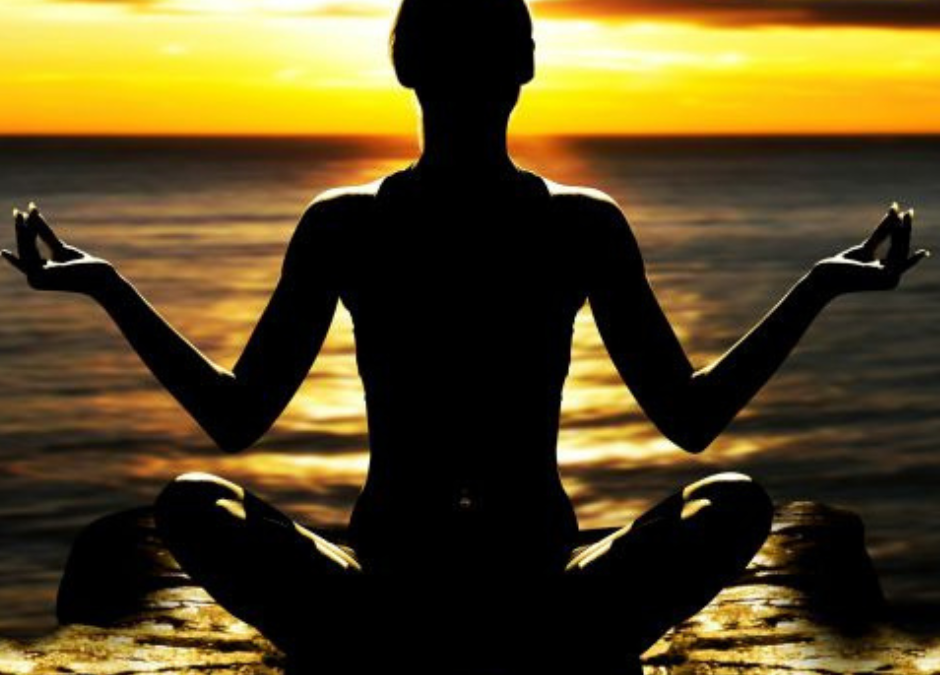
by Tirtha Acharya | Oct 21, 2022 | Yoga
What does Devotional Yoga mean?
Devotional yoga, also called Bhakti yoga, is a spiritual practise that involves giving one’s whole being to a higher power in order to attain enlightenment. It’s a way to raise one’s consciousness to the level of life’s ultimate meaning and complete spiritual awareness, above and beyond what is currently perceived as reality.
Devotional yoga involves chanting sacred mantras, meditating on ancient texts like the Vedas or the Bhagavad Gita, and experiencing a sense of oneness with the world around you.
What Does Bhakti Yoga Mean?
The Sanskrit word bhakti means “adoration or worship of God” from the bhaj root. There are many names for Bhakti yoga, but two of the most common are “love for love’s sake” and “union through love and devotion.” Like other branches of yoga, Bhakti yoga leads its practitioners to an awareness of their own unity with all things.
“Bhakti is the yoga of a personal relationship with God,” says musician Jai Uttal, who was instructed in devotion by the late Neem Karoli Baba. Uttal, a bhakti teacher originally from California who now leads kirtans and chanting workshops around the world, says that surrender is central to bhakti.
David Frawley, a renowned yoga scholar, agrees. According to his book Yoga: The Greater Tradition, “surrender to the Divine as one’s inner self” is the highest form of bhakti yoga practice. According to him, the way involves centering one’s thoughts, feelings, and senses on God.
Where Can One practice Bhakti Yoga?
Bhakti yoga’s or Devotional Yoga popularity has skyrocketed in the United States as the yoga community there has grown up. Every year, people from all over the world gather at the Esalen Institute in Big Sur, California, for the institute’s bhakti festival. The Bhakti Yoga Sun splash was a musical celebration that took place at Yoga Tree in San Francisco. Furthermore, another great yoga festival is Bhakti Fest.
What Yogapedia explains about Devotional Yoga?
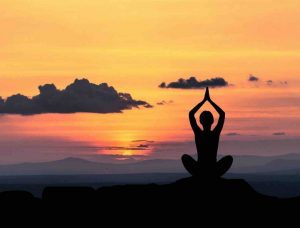 Kirtan, a form of devotional yoga with its roots in India, is now widely practised in the West (“chanting”). The unique benefits of this style include the alleviation of depression, jealousy, anger, egotism, lust, and arrogance, as well as the unification of mind and body. The stress and worry that may have been present is replaced by a sense of contentment, calm, and understanding.
Kirtan, a form of devotional yoga with its roots in India, is now widely practised in the West (“chanting”). The unique benefits of this style include the alleviation of depression, jealousy, anger, egotism, lust, and arrogance, as well as the unification of mind and body. The stress and worry that may have been present is replaced by a sense of contentment, calm, and understanding.
Select an ancient chant or mantra from Hindu or Buddhist texts that you feel at ease silently or aloud repeating in order to practise Devotional yoga through kirtan. Sacred syllables and tones provide a focal point for meditation, allowing one to experience a state of inner calm and ecstasy with the divine.
In addition to kirtan, Devotional yoga consists of eight other limbs that can be practised independently or in conjunction with any other yoga practise to facilitate a surrender to the divine. Shravana, smarana, padasevana, archana, vandana, dasya, sakhya, and atmanivedana are the names of the remaining eight limbs.
Kirtan Yoga:
“Chanting” (in Hindu Sanskrit, “kirtan”) is one of several Yogic methods and is sometimes treated as its own branch of Devotional Yoga.
On the other hand, Kirtan is not simply a bunch of chants. Mantras (or Chants) are recited in a call and response, or question and answer, pattern, supported by classical Indian instrumentation and chanting.
Kirtan Yoga’s in Devotional Yoga, goal is to help one achieve mental peace and emotional dedication. As a rule, this is something that a group of people does together. Bhajan is a spiritual tradition that shares many similarities with Kirtan. Kirtan and Bhajan are both religious in character (Bhakti Yoga), but Bhajan exhibits a more improvisational flair. Bhajan, for example, does not require the use of musical instruments or the adherence to any particular form, such as a call-and- response performance.
Concepts about Bhakti Yoga:
As is commonly known, the Bhagavad Gita emphasises the benefits of bhakti yoga, the path of Devotional Yoga to a large degree. The Gita, however, also emphasises that there are numerous ways to reach yoga’s ultimate goal. Jnana Yoga, or “the path of knowledge,” is another alternative. Supporters of the yogic path of knowledge might think that devotion is unnecessary, and that enlightenment is attained merely by the accumulation of the most comprehensive experiential knowledge of the truth of our existence.
Even yet, the revered teacher Adi Shankaracharya, who was a strong proponent of Jnana Yoga, placed a premium on devotion to the divine, as seen in the 8th-century hymn Bhaja Govindam. According to Adi Shankara, “devotion for God” is the key to reaching enlightenment and breaking free of reincarnation.
Conclusion:
An attitude of modesty, openness and a propensity toward service are all fostered by devotion to the divine. With practice of Devotional Yoga, one’s focus moves from self-centeredness and criticism to an increased capacity for unconditional love. The greatest form of love, known as Prema, begins to express and take over one’s life when one lets it.
Making a conscious effort to serve a higher power and devoting more of our actions to the divine usually results in a deeper connection to and understanding of dharma’s heavenly forces (divine law).
What’s more, something wonderful occurs when one’s perspectives of life, conceptions which had been filled with water by the deadening field of the surrounding world, begin to be supplanted by a presence, encountered within and all around, of bonding to that “Supreme Consciousness.”
Trust in the supreme “Supreme Consciousness” of the universe grows in Devotional Yoga. When this happens, the tight grip our individual egos have on our wills begin to loosen, and we take our first baby steps toward surrender.
As this unfolds, the divine forces involved respond by wrapping their arms around, supporting, and elevating us. This is a gift from God. The yogi’s spiritual development in Devotional Yoga is aided by Divine Grace, which serves as both a resource and a guide on the path toward redefining one’s self-identity as a divine oneness with that “Supreme Consciousness.”
When a yogi’s unique consciousness undergoes a process of transformation into an experiential identification with that infinite, immortal, unbounded supreme consciousness, the boundaries between both the devotee and the object of devotion dissolve.
For more Nepal Yoga Home Blog, please click and read our latest posts!
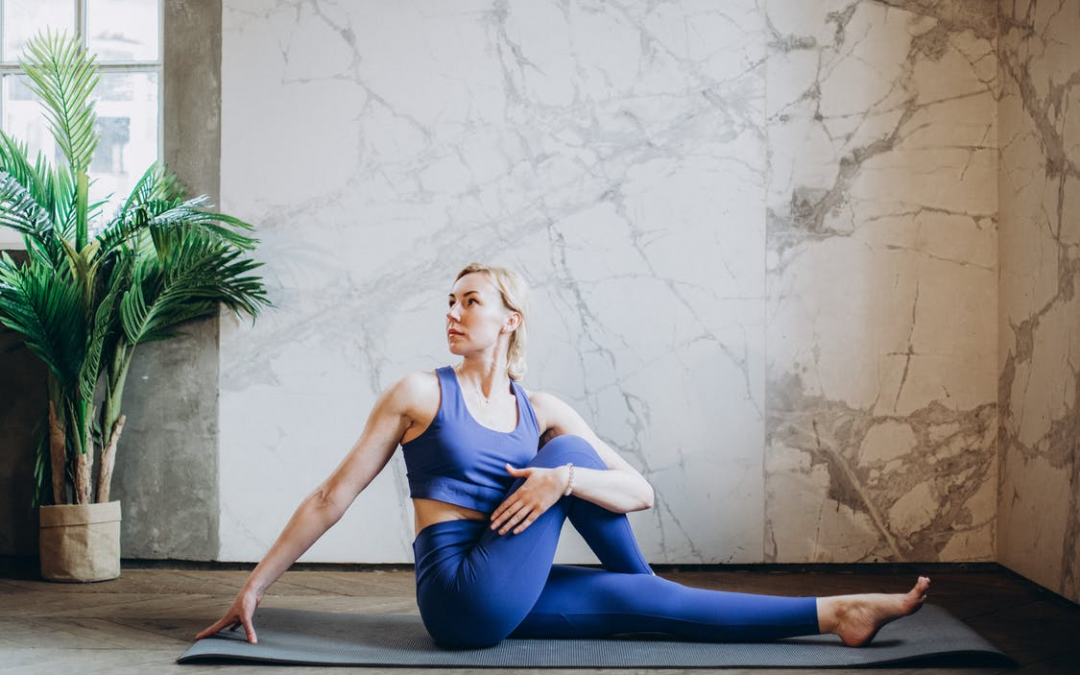
by Tirtha Acharya | Jul 15, 2022 | Yoga
The best time to do yoga largely depends on your lifestyle. Image source: Pexels
The Best Time To Do Yoga
It’s no secret that yoga is a great way to stay in shape, but did you know that there are unique benefits that come with doing yoga at certain times of the day? The best time to do yoga varies from person to person, but some people find that some hours are best for taking this practice to your exercise mat. While it’s perfectly fine to have a set schedule for doing yoga, opting for a twice-daily routine can also help you maintain your energy levels and ensure emotional balance throughout the day.
Practicing yoga has many health benefits, from improving your flexibility to boosting your immunity. It can also help you better manage stress and anxiety, on top of improving your bone strength, mental health, and overall quality of life. But regardless of which time of the day you decide is the best time to do yoga, it’s undeniable that practicing it will lead to significant improvements in your life.
Because yoga is a fairly low-maintenance activity, you can try doing it in your desired schedule at the comfort of your home gym. If you want a guided session with a professional, however, you can sign up for a yoga class. This is also a great way to connect with others and form a community of like-minded enthusiasts.
Early risers would say that the best time to do yoga is in the morning. For night owls, an evening yoga session is preferable. If you want to get the most out of your routine, here’s what to consider when choosing the best time to do yoga.
The Best Time to Do Yoga is in the Morning
Doing yoga in the morning can be a good day-starter, especially if you want to do some exercise and meditation before embarking on daily tasks. Yoga sessions are also traditionally done in the morning, which better suits people that are more active in the evening. If you decide that morning is the best time to do yoga, make sure to do some gentle warm-up exercises first so you can stay invigorated throughout your session.
Lets You Practice Yoga at a Comfortable Temperature
Getting up at dawn or before 6:00 am ensures a nice temperature for your session. Dawn is usually the coolest time of the day, making it the best time to do yoga if you want to get enough energy and maximize your body’s flexibility.
Softens Muscles and Improves Digestion
Doing your asanas the first thing after you wake up helps you relieve aches and stiffness during sleep. During sleep, our body fluids and connective tissues tend to build up as muscles continue to rest. When left unmanaged, this stiffness can result in muscle or joint pains. Morning is the best time to do yoga because it allows you to loosen your joints and muscles that stiffened during sleep, improving your blood flow in the process.
Another reason why morning is the best time to do yoga is that it helps boost your body’s metabolism. This means that your body can better absorb nutrients and digest food throughout the day.
Releases Hormones and Improves Concentration
Hormones are the key to regulating our moods and evoking positive feelings. Studies show that morning meditation helps your body produce endorphins and dopamines that make you feel happy all day.
Besides helping your body release happy hormones, morning yoga sessions can also improve your mental focus. Yoga allows your brain to take in fresh oxygen to give you mental clarity for better productivity. Morning sessions help you start the day in a happy and energetic mood, making the early hours the best time to do yoga.
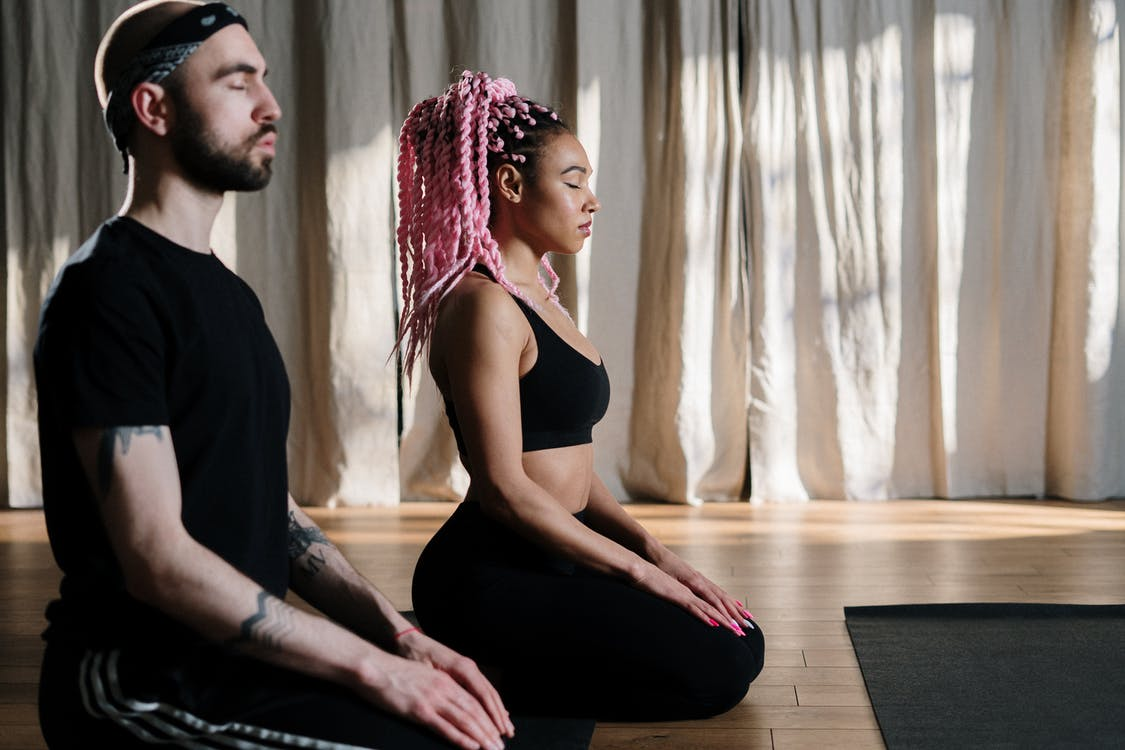
Doing yoga in the morning can energize you throughout the day. Image source: Pexels
The Best Time to Do Yoga is in the Afternoon
Though uncommon, doing yoga in the afternoon also has its benefits. Afternoon sessions can be a great middle ground for early risers and night owls. If you’re somewhere in between, perhaps the best time to do yoga is in the afternoon.
Helps You Destress and Balances Your Appetite
Doing yoga in the afternoon provides midday rest and helps you reset your body. If you’ve had a busy morning, the afternoon can be the best time to do yoga and relax your mind. An afternoon session also allows you to work up your appetite throughout the day. Consider doing yoga around 2-3 hours before mealtime to have a balanced appetite.
Gets You Through an Afternoon Slump
Doing yoga in the afternoon can be restorative, making it the best time to do yoga for some people with a busy schedule. Yoga helps your body release endorphins that can get you through your afternoon slump. As such, an afternoon yoga session can refresh your mind and re-energize you to keep powering through daily tasks.
Gives You the Best of Both Worlds
Some people cannot decide on the best time to do yoga because they are neither morning nor evening people. Practicing yoga in the afternoon is great for people who tend to be more energetic hours after waking up, but also want to wind down at the end of the day.
The Best Time to Do Yoga is in the Evening
In addition to being a form of exercise, yoga also serves as a therapeutic practice. Doing yoga after sundown can help you cap off the day’s events in a relaxing way. The evening can be the best time to do yoga since there’s no need to rush and make time for tasks and responsibilities.
Helps You Unwind from Stress
The evening is also the best time to do yoga because it helps you move away from the stress of daily tasks. Practicing your poses at the end of the day helps you clear your mind and focus on yourself. If you want to unpack your mind and body after a long day, try doing yoga after dusk or once you’ve wrapped up your work schedule.
Promotes Better Sleep
Yoga is meant to promote mindfulness and relaxation—two things that we need to have a good night’s sleep. Yoga helps you reduce mind chatter and meditate before bed, allowing you to get deep and restful sleep thanks to positive effects on your nervous system. Being able to balance your thoughts through meditation prevents you from falling into insomnia and waking up groggy the next day. Instead of lying in bed ruminating, you can decide that evening is the best time to do yoga.
Balances Energy at the End of the Day
Another reason why the evening is the best time to do yoga is that it delivers plenty of health benefits. Doing yoga in the evening helps improve your blood circulation, resulting in lower blood pressure and more balanced energy levels. An evening yoga session can also detoxify your body and encourage cell regeneration to boost your immune system and improve your sleep hygiene.
Helps You Burn Calories
Practicing strengthening poses in the evening helps you better digest the food you ate all day. This also relieves digestion troubles, helping you burn more calories during sleep. Having these benefits means that evening is the best time to do yoga for those actively trying to lose weight.
Soothes Your Sore Muscles
A long day at work can result in joint pains and a lot of sore muscles, especially if you have a desk job. Doing yoga poses before bedtime helps you reduce muscle tension and ease soreness for a more replenishing sleep. The best time to do yoga can be in the evening when you can properly oxygenate your body and release the crunchiness of your muscles.
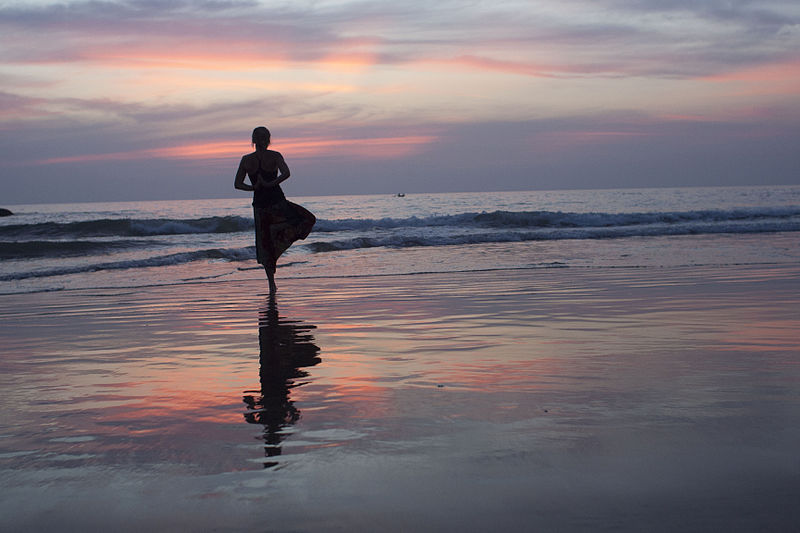
Doing yoga in the evening helps you relax before bedtime. Image source: Wikimedia Commons
The Best Time to Do Yoga Depends on You
There’s no right or wrong time to do yoga, but you need to properly assess your body and lifestyle to determine the schedule that suits you. Ultimately, the best time to do yoga is not set in stone.
Whether you’re an early bird, a night owl, or somewhere in between, yoga is a healthy practice that can improve your body’s processes while helping you become more mindful and clear-headed to take on any hurdle. Once you’ve decided to commit to your yoga journey, start weighing the benefits of practicing at each time of the day to decide on the best time to do yoga.
We all know that adopting a yoga routine will do wonders for the body. However, it pays to be well-informed about which time of the day can enhance your physical, mental, and spiritual well-being the most.
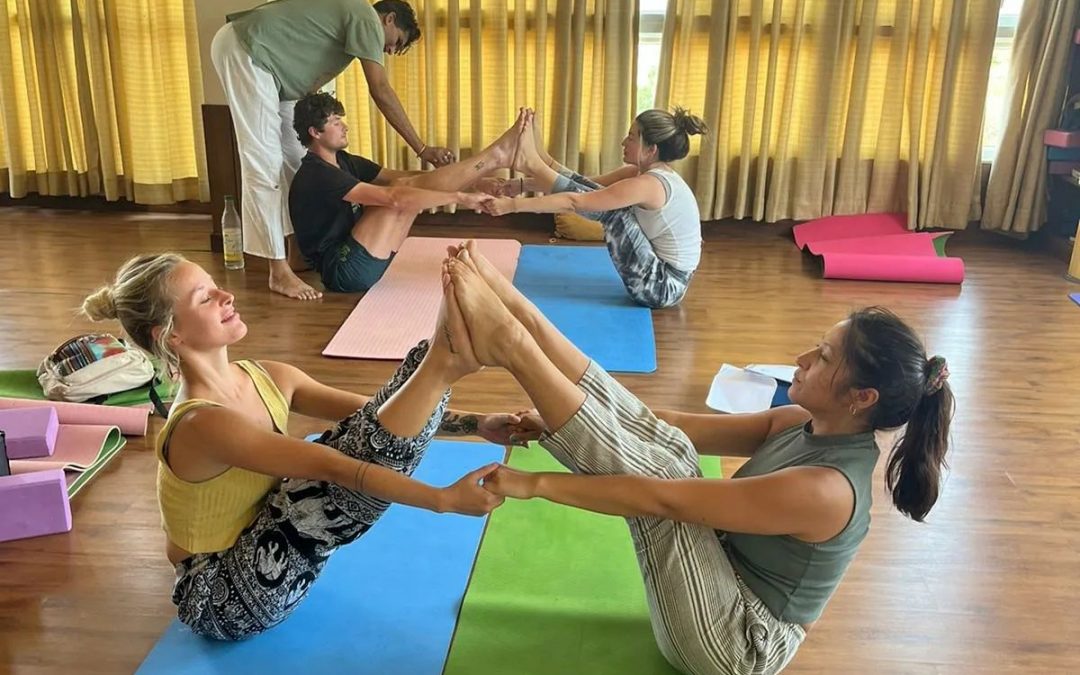
by Tirtha Acharya | May 31, 2022 | Yoga
Join Our Accredited 200 Hours Yoga Teacher Training Course
certified or accredited 200 hours yoga teacher training is a type of training given to those individuals who wish to be teachers and like to gain knowledge of how to be a teacher in the field of yoga. Nepal Yoga Home has various programs training while some of them being teacher training and accredited 200 hours yoga teacher training is also one of them and also one of the most popular teacher training programs.
First, let us know what accredited is, the google meaning of accredited is officially recognized or authorized which makes it authorized 200 hours yoga teacher training. Authenticity is a big name in today’s world. It is a time when one can find cheap and fraudulent people everywhere and one needs to be incredibly careful and thoughtful before even buying something. There is mixture and impurity in everything, even in the foods and daily used items. Also, the yoga world is not away from fraud and deception.
Why Accredited 200 hours yoga teacher training?
Mostly the individuals that take part in accredited 200 hours teacher training are either involved in works related to yoga or planning to do so shortly. Also, in today’s world, one needs good certificates and qualifications to be at top of the business or service game they want to be part of. Good certificates will surely help to gain what one wants. Surely, certificates are not everything one’s skill are also game changers, but one also needs good certificates to prove from where they have learned.
One of the most amazing things about Nepal yoga home and its accredited 200 hours yoga teacher training is that it comes with the certificate of Yoga Alliance. Yoga Alliance is an organization that was created to maintain the purity of yoga so that fraud people who give haphazard knowledge of yoga could be filtered out.
Yoga home which will provide the training of accredited 200 hours yoga teacher training will also provide the registration in Yoga Alliance as well as certification of a teacher from Yoga Alliance at the end of the session which will be huge to begin yogic career as a teacher.
What is accredited 200 hours yoga teacher training?
Accredited 200 hours yoga teacher training consists of learning and practicing yogic activities, lifestyle, anatomy of yoga, Alignment and different aspect of yoga in a fun and peaceful learning environment. The first phase is the introduction where the teacher will introduce themselves to the students and with them also introduce yoga to the students. Then comes the phase where the students will be deeply immersed in the world of yoga. They will be helped by the teachers to know about the Asanas, postures, techniques, meditation, and similar other activities.
Kundalini yoga, Ashtanga yoga, and Ashtanga Vinyasa yoga are some of the yoga forms that are practiced here. Also, these yoga in themselves are very vast and the students are taught the balanced methods and techniques that are taken from all of them so that the students will be able to grasp the essence of yoga which is inside every differentiated form, and they can understand them better.
More from this there will be Pranayama, Panchakarma, other Ayurveda activities, and so much more if the students are willing to learn Nepal Yoga Home is the powerhouse of the Yogic knowledge and resources.
Staying facility
Those individuals who are willing to go through 200 hours yoga teacher training will have to stay in Nepal Yoga home. Learning teacher training is not like going to school and returning home in the evening after some hours of learning. This is the process of continuous learning where the process of learning does not end till you finish the course.
Also, learning continuously does not mean one will spend the entire day and night before books. Learning books and scriptures will be part of learning but most of the time will be for practical learning, learning by doing, and learning by fusing knowledge with day-to-day activities. For example, during eating, they will learn how to eat balanced food which will enhance the yogic process and spirituality within them. They will see the way, learn the way, practice the way, and at last follow the way.
Moreover, the accommodation and accommodations are also very impressive, comfortable, beautiful, and amazing.
Students and teachers
Students and teachers need to have close bonding to make learning fun, involved, and a wonderful experience, and while taking accredited 200 hours yoga teacher training it will be so. The teachers of Nepal Yoga home have profound experience in the related field and know their way around students’ minds and hearts. They can make the learning process exciting and interesting. It is not amazing to learn what you want without getting bored or feeling lethargic. Also, the Nepal yoga home maintains such an amazing environment that the psychology of both students and teachers will be calm.
Moreover, the management team also works day and night to make the stay of students for 200 hours of yoga teacher training one in a lifetime experience.
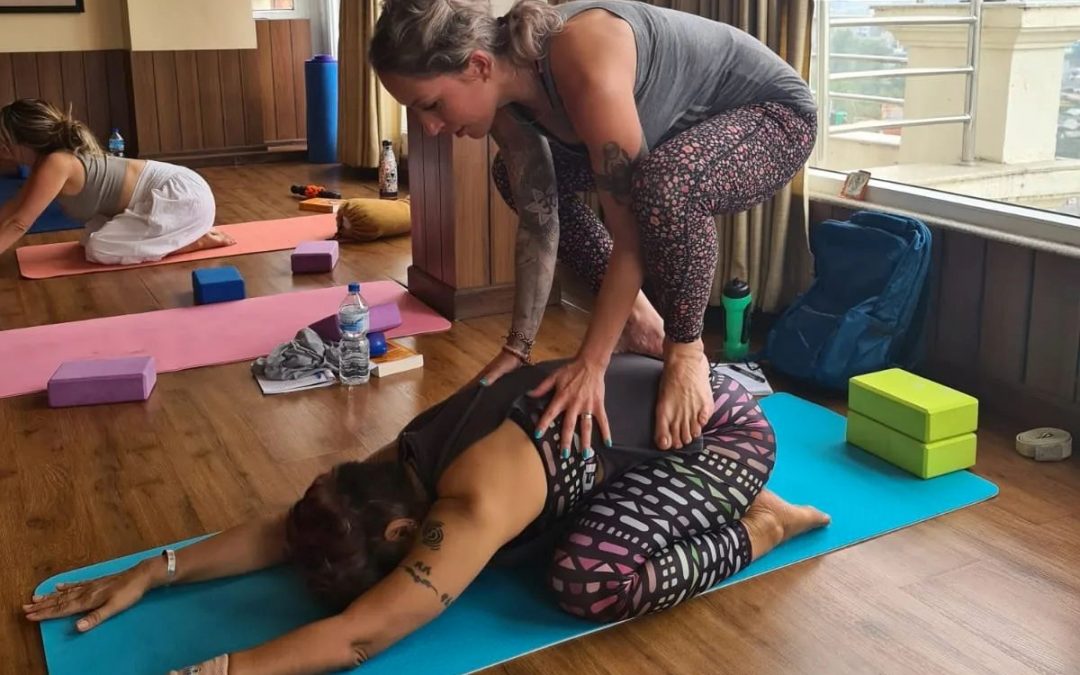
by Tirtha Acharya | May 22, 2022 | Yoga
Accredited 500 hours yoga teacher training
500 hours yoga teacher training: multi style Hatha Ashtanga Kundalini & Iyengar yoga training to integrate beginner to advanced level of yoga. This course is the perfect balance of various elements that make the teacher training much more wonderful. On average, 500 hours yoga teacher training is one of the longest courses looking at the time. This is good because yoga and yogic practices are delicate subjects that require time, patience as well as a significant amount of effort. Accredited 500 hours yoga teacher training acknowledges this and provides the required time and effort for the students to master the art of yoga.
The meaning of accredited is authorized or recognized. One who goes to teacher training wishes their certification to be of value and get valued by a reputed organization. Not just in the yoga sector and not only in Nepal. Any type of knowledge, information, skills, or training any individual acquires they want it to be special and they want it to be recognized all over the world.
This is the very reason why people strive extremely hard to get into universities like Oxford, Harvard, and so on. Time and time again they have proved with their product how great of the teaching place they are. Now, we are at a point where the certification of these universities is sold like a highly priced treasure and that is the value of accreditation.
Teachers for accredited 500 hours yoga teacher training
For such an amazing course there is a need for amazing teachers, and it is the first thing we noticed about the program. Teachers are said to be the light that takes the students from darkness to enlightenment. A teacher who has complete knowledge of the subject matter is the one who is most suited to teach the students.
The teachers here are the most qualified people in the field of yoga. Till today they have amassed years of experience and gained a vast amount of knowledge through research and study. They are so focused on the field of yoga that they still after so many years are researching to make their knowledge more efficient and techniques purer and more precise.
There is another thing that is as required as knowledge to the teacher while teaching which is the ability to form a bond, and connections with students and understand them. A teacher with a vast amount of knowledge who cannot connect with his student is also not considered a good enough teacher. A teacher who has the right knowledge and can communicate with students to disperse the knowledge that he has amassed is an excellent teacher. We have the best teacher who has lots of experience in the field of yoga and the best in their jobs.
What will happen in accredited 500 hours yoga teacher training?
One word would not explain what is going to happen in 500 hours yoga teacher training. Our 500 hours yoga teacher training is a blend of various yoga of different tastes and when combined will give the perfect dish of yoga who will go through this training course.
Vinyasa yoga, Hatha yoga, Kundalini yoga, Ashtanga yoga, and Iyengar yoga are some of the yoga techniques that are going to be taught here. Some of these yoga forms and their principles are so vast in an amount that 500 hours given to a single method of yoga would not be enough to master it. That is why the 500 hours yoga teacher training will contain the essence of all of this yoga and make something entirely new and equally amazing.
Practicing various postures, learning to do meditation, and various techniques to detox the body and mind will also be taught and practiced for 500 hours yoga teacher training. At first basic techniques and methods will be taught and as the time of 500 hours of yoga teacher training passes more advanced and difficult techniques and methods will be taught.
The benefit of Accredited 500 hours yoga teacher training
Lower quality and mixture in quality products can be found everywhere in the world. Even the food we eat, the juices we drink we drink are filled with the mixture and for-profit people do so. Moreover, the field of services like that of yoga and similar industries is also filled with the same type of impurities and frauds. Various organizations have been formed and they came forward to provide standardization so that frauds and people who are teaching wrong procedures of the yogic practices and be detected and punished.
If one organization provides accredited 500 hours yoga teacher training, then that means that they are registered to an organization that provides standardization. Which will make sure that the service they are going to provide is good and the teachings they will be teaching will be authentic.
This authentic certificate will also help the future teachers who will be attending 500 hours yoga teacher training. Without being registered as a yoga teacher in a yoga alliance one cannot teach in registered yoga training centers and teacher trainings. Getting accredited 500 hours of teacher training will surely help to boost their career as wonderful yoga teachers.
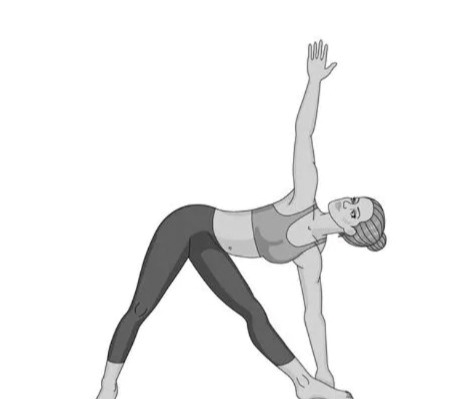
by Tirtha Acharya | Apr 30, 2022 | Yoga
9 Different Types Of Drishti In yoga | The Eye Play In Yoga
Drishti, or focused sight, is a way of creating full intention. It refers to the fifth limb of yoga, pratyahara, involving sensory withdrawal, and the sixth limb, Dharana, dealing with focusing. Drishti in yoga is the “focused gaze.” It is a technique used to improve focus in our practice. Similar to our Ujjayi breath, practicing Drishti helps you restore control of the distracted mind via sight.
Important of Drishti in yoga
In every asana, the required Drishti increases focus, supports movement and helps orient the pranic (energetic) body. The full significance of Drishti isn’t confined to its usefulness in asana. In Sanskrit, Drishti may also signify a vision, a point of view, or knowledge and insight.
9 Different forms of Drishti in yoga
In Dharana, we deal with establishing a single focus of concentration in preparation for meditation. After all, where your look travels, your attention and life force energies follow. Whether we are utilizing our Drishti to transfer attention inside or as a physical point of concentration, it is a directed gaze that is soft and gentle rather than an intense stare.
Drishti in yoga is divided into nine parts. In this article, you will discuss asanas with which they are most usually practiced. Your yoga and meditation practice will benefit significantly if you are familiar with the different Drishti. You may experiment with each of these in your next yoga class to see if they help you establish a better sense of balance and relax more deeply throughout your session.
1. Angusthamadhyam Drishti
One may find Angusthamadhyam in between the thumb’s nail and the first joint. Practices like Utkatasan, Urdhva Hastama, and Virabhadra A have included this Drishti into their poses.
2. Nasagra Drishti
Nasagra Drishti in yoga is focusing on the tip of the nose, the viagra Drishti sits. In the poses of chaturanga dandasana and urdhva mukha svanasana, it is most commonly used. Inversions, as well as sitting meditation postures such as padmasana, all make use of viagra.
3. Hastagram Drishti
As the name suggests, hastagram Drishti is a subtle hand or finger imprinting. Utthita trikonasana and utthita parshvakonasana are good examples of this.
4. Parsva Drishti, Left and Right Side
We may glance at two possible directions in Parva Drishti: to the left or the right. This gaze has two distinct Drishti, depending on which side we’re gazing at. In a spinal twist, it usually moves in lockstep with the head. Both utthita par Vanita and Ardha matsyendrasana, for example, require you to rotate your head to the left or right depending on the direction you are twisting in. This two drishti may be seen as an extension of your spinal twist, with your gaze extending beyond the top of your head.
5. Urdhva Drishti in yoga
As with virabhadrasana B’s urdhva Drishti, this Drishti focuses upward or outward, creating a sensation of infinite expanse. An all-encompassing stare that is bold and empathetic when necessary like a real warrior
6. Nabhi Chakra Drishti
In Nabhi chakra Drishti in yoga, the sight is drawn to the navel. Our eyes are always drawn to the navel as we enter adho mukha svanasana. The Manipura chakra is located in this location and is a powerful energy source. It is also known as “the magic circle” in Sanskrit when referring to the Nabhi chakra.
7. Padayoragram Drishti
This dish is used in janusirsasana, and most forward bends as we direct our eyes to our feet. In this manner, the spine can stretch and reminds us to keep our backs straight rather than curving them at the lower level.
8. Bhrumadhya Drishti
At the center of the brow, this drishti in yoga is located. Most often, while we are meditating, we employ bhrumadhya. Whether the eyes are open or closed, the device may be utilized. This look is meant to draw our attention inside to increase our consciousness and activate the kundalini. The ocular nerves are stimulated, concentration is sharpened, and the mind is calmed. Matsyendrasana is another place where it is utilized. Yoga asana and meditation practice with Drishti discipline our attention, allowing us better access to our higher states of awareness and consciousness.
The practice of Drishti is used to regulate the mind, attain bodily equilibrium, and deepen one’s spiritual connection to the Divine. As drishti is the last yogic practice before obtaining samadhi, or enlightenment, you can understand why it is crucial to have it in your yoga toolbox as well.
Your Doshas May Become Out of Harmony During These Tense and Uncertain Times. Instead of obsessing over every question, respond honestly with your gut. Ultimately, you know yourself better than anybody else does.
9. Ajna Chakra Drishti In Yoga
It is a closed-eye internal gaze known as Antara Drishti. The Ajna chakra, or third eye center, is a place of divine knowledge and intuition. With your eyes closed, gaze up and inside. According to master yogis of the Iyengar tradition, the practice of yoga may help develop and improve one’s inner vision and knowledge.
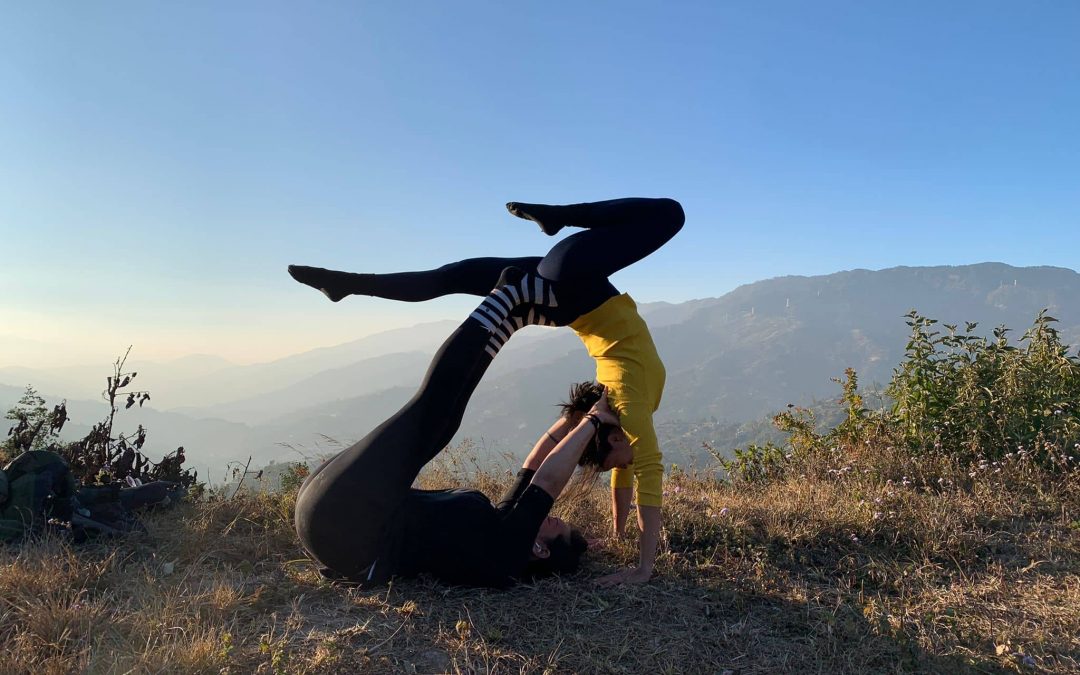
by Tirtha Acharya | Apr 25, 2022 | Yoga
Advanced YTTC- Teacher Training Course
There are various courses of yoga given at various institutes, and retreat centers around the world. Among the various yogic courses, there is an advanced yoga teacher training course which focus on advanced practice of yoga asana, meditation, breathing and all dimension of yoga. Advanced YTTC we provide in Nepal Yoga Home is authentic, traditional, multi style and true yoga which practices by our saints. Before going further let’s first know what advanced yoga is and what advanced yoga teacher training course is.
What is Advanced yoga?
Advanced YTTC is a type of yoga that is classified as difficult to perform and may take some time and dedication to master. Generally, it consists of difficult poses and postures which untrained bodied people may find extremely difficult to perform. Some are difficult for the physical body while some are difficult for the spiritual as well as the mental body.
What is an Advanced yoga teacher training course?
Advanced YTTC is a subject of study for those who are willing to be the teacher of advanced yoga. They are in the process of mastering Advanced yoga so that in the future they can be teachers in this advanced course. Here they will go deeper into the subject matter of yoga which is going to be its very core and essence.
Why take advanced yoga?
Taking advanced YTTC later may come forward as one of the best decisions taken by the individuals who decide to take part in it. There are various reasons why I should take advanced yoga teacher training and let us discuss them,
The benefit to your own body
This may have the name of a teacher training course, but it does not mean that it is not going to be beneficial to the body of the individual who is going to practice it. One will practice yoga and healing techniques for the entire course which will take out the toxins from the body and mind which is going to make them healthier.
Advanced knowledge
Ast the name itself suggests this is the advanced form of yoga with higher knowledge in both theories as well as the practical form. People who strive for a great form of yogic knowledge, principles, and yoga forms should join this course as advanced YTTC consists of a lot of them.
Amazing experience
Learning yoga at this amazing place itself is a wonderful experience. One can take a break from their hectic schedule and once in a while, it not only feels good but also is the need of the body, mind, and soul. Day-to-day schedule and always running can sometimes hamper both physical and mental health.
Why Nepal is best for advanced YTTC?
Nepal is best for advanced yoga learning and advanced yoga teacher training because this is the origin of this spiritual practice. The authenticity of the yogic practices that are found here is hard to find in other parts of the world. One can investigate and research even the process and knowledge that is yet to be rediscovered and lost to the time.
Is it necessary to do advanced posture?
Yoga comes in all shapes, sizes, and postures. There are easy postures and poses which can be done even by someone who has done yoga for the first time in their lives. However, there are such which need constant focus for even years to do so. However, the question is it necessary to do advanced posture?
Yes, every type of yoga has its benefits and effects on the body. The first reason is the benefit that is given by one posture and exercise is hard to precisely get by another technique so, to reap all the benefits one must even learn the advanced posture.
Another important thing is that we are learning to be a teacher of yoga and to be a teacher and give knowledge one must be able to master the topic so that they can have a better understanding of the subject and give the complete knowledge to their students. The name of the course is advanced YTTC, and one needs to master advanced poses to teach others.
Why are only a few people interested in advanced yoga?
The times are changing. In this informative world, people are more interested in a healthy and active lifestyle. Hence, more and more people are practicing yoga and arriving in the amazing world of yoga. However, most people only get stuck at the beginner’s level and do not go beyond that and there is a big reason behind that.
Mainly people practice yoga so that they can be healthy, it is not to gain advanced knowledge or to be spiritual but to have a healthy body. Basic yoga steps and basic yoga knowledge also can grant amazing health benefits and other advantages and most people are satisfied with what they are getting and do not strive to get to the advanced level it is the biggest reason why most people are not interested in advanced YTTC.
There are some people who despite having a great interest in advanced yoga and superior yogic knowledge are not able to get it and for them, the biggest obstacle is their time. To master yoga in the advanced form and gain superior yogic knowledge one needs a considerate amount of time, dedication, and practice. Even to go to advanced YTTC one needs time. People even having interests there are not able to give them time because they have their profession, study, and other work to do to run their lives. Even with great interest and enthusiasm people are not able to perform advanced yoga.

 Kirtan, a form of devotional yoga with its roots in India, is now widely practised in the West (“chanting”). The unique benefits of this style include the alleviation of depression, jealousy, anger, egotism, lust, and arrogance, as well as the unification of mind and body. The stress and worry that may have been present is replaced by a sense of contentment, calm, and understanding.
Kirtan, a form of devotional yoga with its roots in India, is now widely practised in the West (“chanting”). The unique benefits of this style include the alleviation of depression, jealousy, anger, egotism, lust, and arrogance, as well as the unification of mind and body. The stress and worry that may have been present is replaced by a sense of contentment, calm, and understanding.






